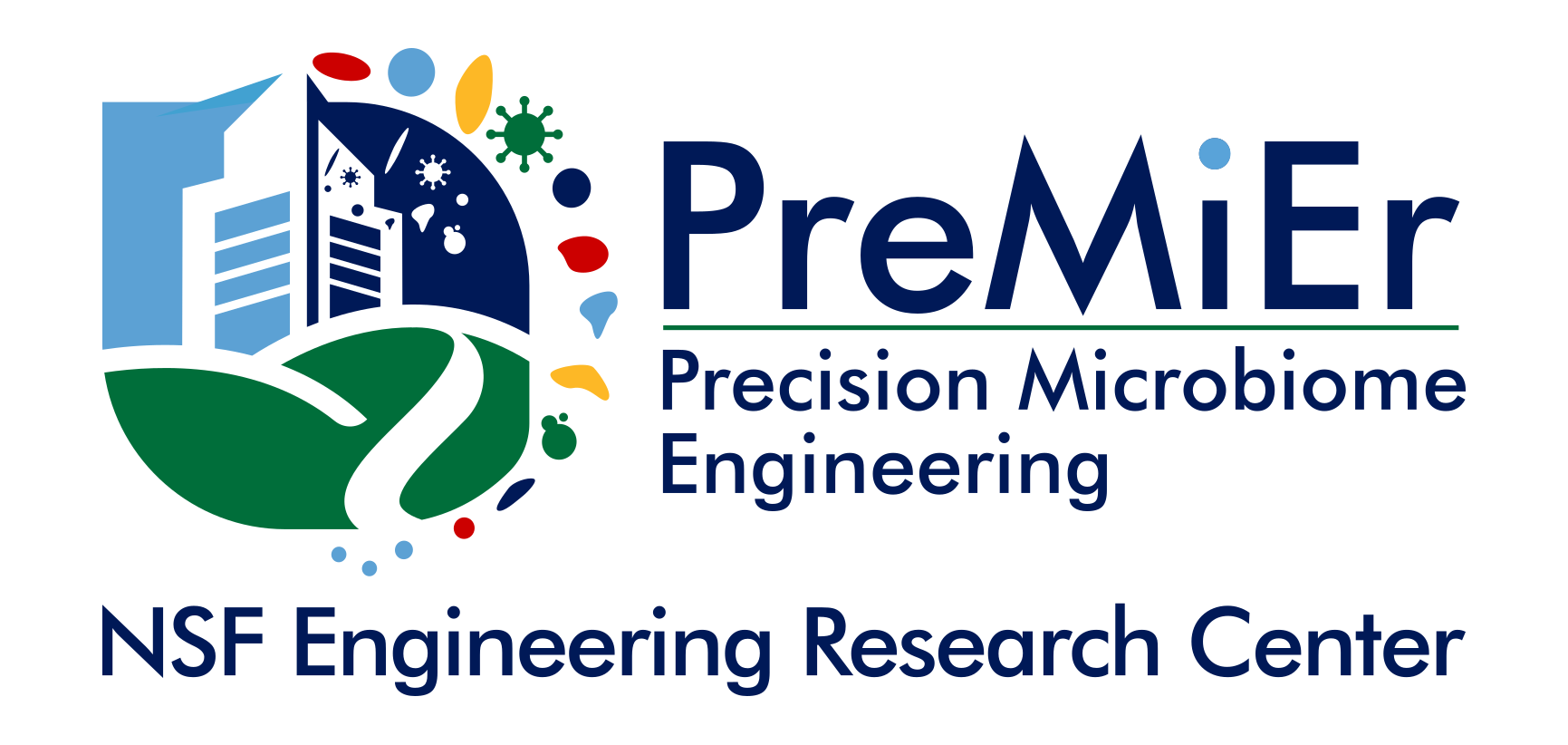PreMiEr's Modeling Teams Make Progress Towards Identifying "Healthy" and "Unhealthy" Microbiomes
Outcome/Accomplishment
The ERC for Precision Microbiome Engineering (PreMiEr) is an NSF-funded Engineering Research Center (ERC) based at Duke University. Multiplebioinformatics groups within PreMiEr's Research Thrust 3 (RT3), known within the ERC as the "Modeling Thrust," have made progress on the analysis of microbiome data in relation to the built environment. One such group, that of Dr. Yi-Hui Zhou at North Carolina State University, published two manuscripts in the last year with potentially significant impact for PreMiEr and its field of research.
Impact/Benefits
PreMiEr's overarching goal is to engineer the microbes of the built environment to positively impact human health. At the core of this goal lies a substantial and difficult question – what does a "healthy" built environment microbiome look like, and is it the same for all people? One way to approach this issue might be to first identify and define what an "unhealthy" microbiome might look like by linking specific microbes, metabolites, or other factors to disease or other negative outcomes. Dr. Zhou's work creates analytical methods that both link microbiomes to disease and also increase the power of computer algorithms that might help predict those relationships.
Explanation/Background
Dr. Zhou's lab has made significant strides in the field of microbiology. Her group has introduced a powerful tool called "Correlation and Consensus-based Cross-taxonomy Network Analysis" or "C3NA," which empowers researchers to unravel the intricate relationships between microorganisms, our bodies, and diseases. C3NA simplifies the exploration of microbial data, making it easier to uncover connections between different microorganisms and conditions like colorectal cancer and Crohn's disease. This user-friendly tool enhances the capacity to study and understand these relationships effectively and Dr. Zhou's group will soon be applying this tool to study and engineer the built environment microbiome.
Furthermore, Dr. Zhou's group pioneered an innovative approach for utilizing microbiome data to predict diseases across various studies. They realized that microbiome data can vary significantly among studies, which poses challenges in creating accurate prediction models. The Zhou lab has created a groundbreaking method that involves amalgamating data from different studies, resulting in improved model performance and the identification of pivotal microorganisms for disease prediction. This research is propelling us towards a future where we can intentionally craft our living and working environments to actively support our health by engineering the built environment microbiome. These breakthroughs have the potential to revolutionize our comprehension of human health, offering the promise of environments that proactively contribute to our well-being.
Song, K., Zhou, YH. C3NA: Correlation and Consensus-based Cross-taxonomy Network Analysis for compositional microbial data. BMC Bioinformatics 23, 468 (2022).
Song, K., Zhou, Y.-H. Leveraging scheme for cross-study microbiome machine learning prediction and feature evaluations. Bioengineering 10, 231 (2023).
Location
Durham, North CarolinaStart Year
Biotechnology and Healthcare
Lead Institution
Core Partners
Fact Sheet
Outcome/Accomplishment
The ERC for Precision Microbiome Engineering (PreMiEr) is an NSF-funded Engineering Research Center (ERC) based at Duke University. Multiplebioinformatics groups within PreMiEr's Research Thrust 3 (RT3), known within the ERC as the "Modeling Thrust," have made progress on the analysis of microbiome data in relation to the built environment. One such group, that of Dr. Yi-Hui Zhou at North Carolina State University, published two manuscripts in the last year with potentially significant impact for PreMiEr and its field of research.
Location
Durham, North CarolinaStart Year
Biotechnology and Healthcare
Lead Institution
Core Partners
Fact Sheet
Impact/benefits
PreMiEr's overarching goal is to engineer the microbes of the built environment to positively impact human health. At the core of this goal lies a substantial and difficult question – what does a "healthy" built environment microbiome look like, and is it the same for all people? One way to approach this issue might be to first identify and define what an "unhealthy" microbiome might look like by linking specific microbes, metabolites, or other factors to disease or other negative outcomes. Dr. Zhou's work creates analytical methods that both link microbiomes to disease and also increase the power of computer algorithms that might help predict those relationships.
Explanation/Background
Dr. Zhou's lab has made significant strides in the field of microbiology. Her group has introduced a powerful tool called "Correlation and Consensus-based Cross-taxonomy Network Analysis" or "C3NA," which empowers researchers to unravel the intricate relationships between microorganisms, our bodies, and diseases. C3NA simplifies the exploration of microbial data, making it easier to uncover connections between different microorganisms and conditions like colorectal cancer and Crohn's disease. This user-friendly tool enhances the capacity to study and understand these relationships effectively and Dr. Zhou's group will soon be applying this tool to study and engineer the built environment microbiome.
Furthermore, Dr. Zhou's group pioneered an innovative approach for utilizing microbiome data to predict diseases across various studies. They realized that microbiome data can vary significantly among studies, which poses challenges in creating accurate prediction models. The Zhou lab has created a groundbreaking method that involves amalgamating data from different studies, resulting in improved model performance and the identification of pivotal microorganisms for disease prediction. This research is propelling us towards a future where we can intentionally craft our living and working environments to actively support our health by engineering the built environment microbiome. These breakthroughs have the potential to revolutionize our comprehension of human health, offering the promise of environments that proactively contribute to our well-being.
Song, K., Zhou, YH. C3NA: Correlation and Consensus-based Cross-taxonomy Network Analysis for compositional microbial data. BMC Bioinformatics 23, 468 (2022).
Song, K., Zhou, Y.-H. Leveraging scheme for cross-study microbiome machine learning prediction and feature evaluations. Bioengineering 10, 231 (2023).

